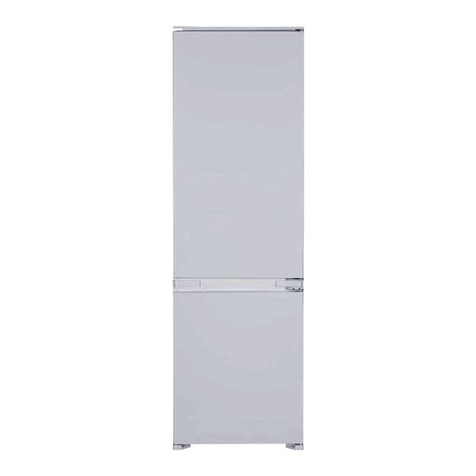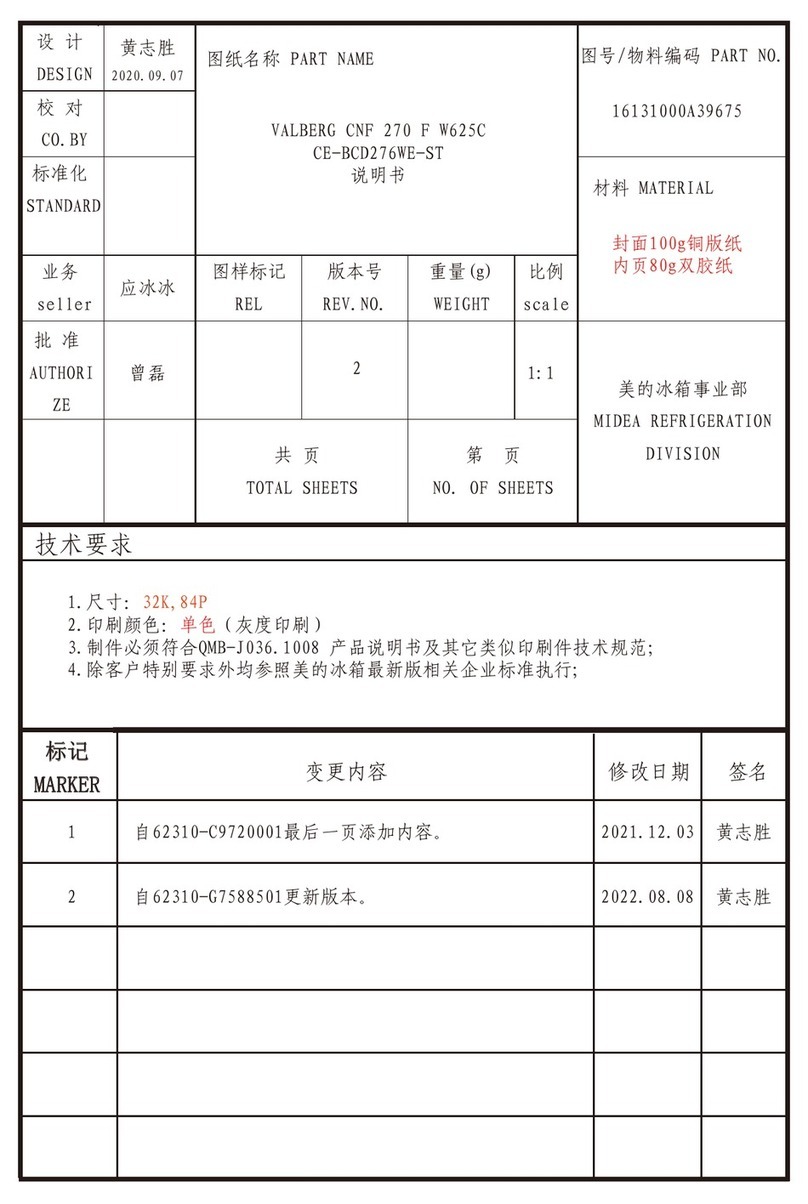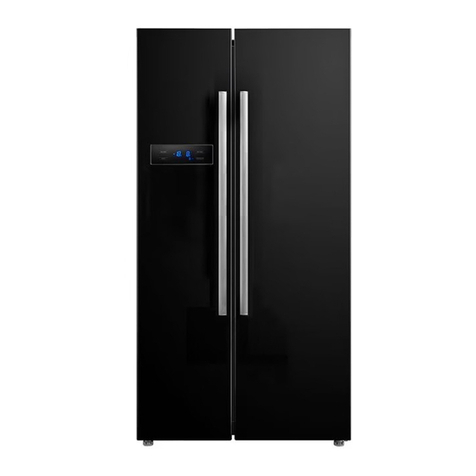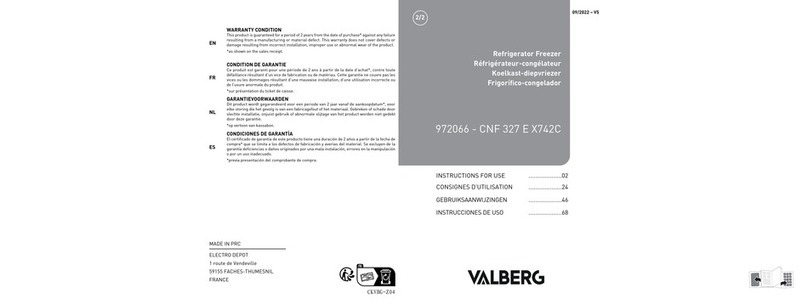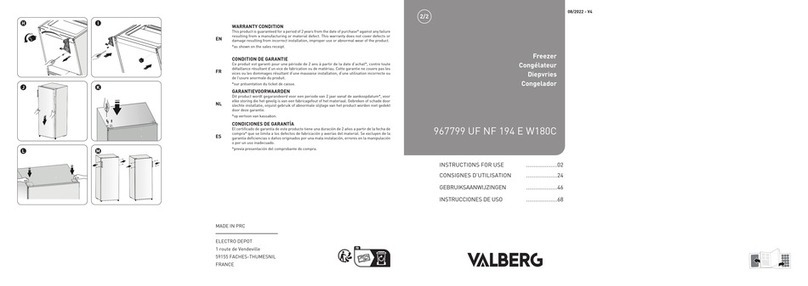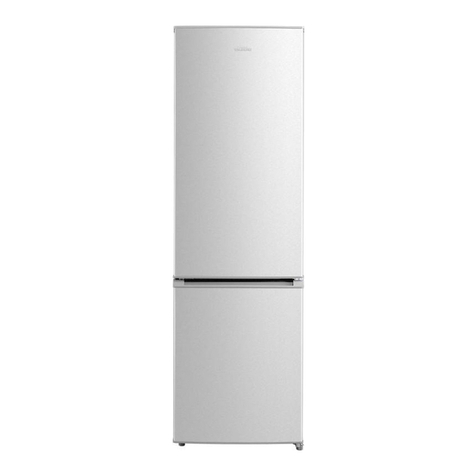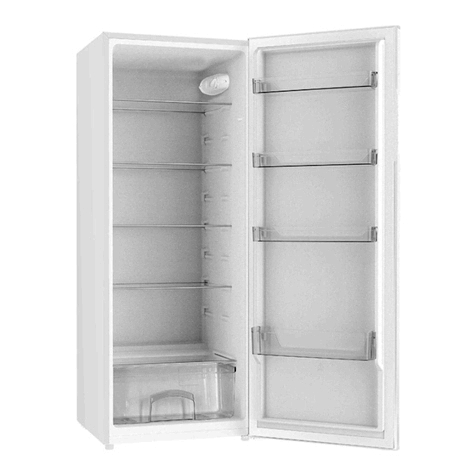
16 17
FR FR
Aperçu de l’appareil Aperçu de l’appareil
A A
16 17
FR FR
Informations pratiques Informations pratiques
C C
16 FR
Aperçu de l’appareil
A
16 FR
Informations pratiques
C
16 EN
Overview of the appliance
A
16 EN
Useful information
C
Defrosting
Why you should defrost the appliance:
•
Water in the food or that gets into the air inside the refrigerator when the doors are opened
can form a layer of frost inside the appliance. As the frost layer thickens, it reduces the
cooling effect of the appliance. When it is more than 10 mm thick, you should defrost
the appliance.
Defrosting the refrigerator
•
This compartment is automatically regulated by switching the temperature control on
and off; it does not require defrosting. The defrosting water will automatically flow into
a drip tray via a drain pipe at the back of the refrigerator.
Defrosting the freezer
• The freezer is defrosted manually. Before doing so, remove the food from the freezer.
•
Remove the ice cube tray and any food from the trays or place them temporarily in the
refrigerator compartment.
• Set the temperature knob to the “0” position (the compressor will turn off) and leave the
freezer door open until the ice and frost have completely melted and accumulated at the
bottom of the freezer. Wipe up the water with a soft cloth.
•
To speed up the defrosting process, you can place a bowl of hot water (about 50°C) in
the freezer compartment and scrape off the ice and frost with a defrosting spatula. Once
defrosting is complete, be sure to set the temperature control knob to the initial position.
•
To avoid warping of the interior of the appliance, it is not recommended to heat the freezer
compartment by directly applying hot water or using a hairdryer.
• It is also not advisable to scrape off ice and frost or to remove food from containers that
were frozen with it, using sharp tools or wooden rods, so as not to damage the inner lining
or the surface of the evaporator.
CAUTION
Before defrosting, switch off the appliance by turning
the temperature control to the “0” position.
17 FR
Aperçu de l’appareil
A
17 FR
Informations pratiques
C
17
Overview of the appliance
A
17 EN
Useful information
C
IMPORTANT
The appliance should be defrosted at least once a
month. If the door is opened regularly or if the appliance
is used in an extremely humid environment, you are
advised to defrost the appliance once a fortnight.
Extended periods of disuse
• Remove all refrigerated elements.
• Switch off the appliance by turning the temperature control to the “0” position.
•
Remove the power plug from the mains socket, turn off the power or disconnect the
power supply.
• Clean the appliance thoroughly (see “Cleaning and maintenance”).
• Leave the door open to prevent odours from forming.
PLEASE NOTE
If the appliance has a freezer compartment.
Useful tips and advice
Energy-saving tips
• We recommend that you follow these energy-saving tips.
• Avoid leaving the door open for long periods.
•
Make sure that the appliance is away from any heat source (direct sunlight, electric oven,
etc.).
• Do not set the temperature to any colder than necessary.
• Do not place hot food or evaporating liquid in the appliance.
•
Install the appliance in a well-ventilated and moisture-free place. Please refer to the
section “Installing your new appliance”.
•
If the diagram shows the correct combination of shelves, crispers and racks for your
appliance, please do not change it. This combination is designed to be the most energy-
efficient configuration.
Tips for refrigerating fresh food
•
Do not place hot food directly in the refrigerator or freezer;
this would raise the interior temperature, thus increasing the activity of the compressor,
which would then consume more energy.




